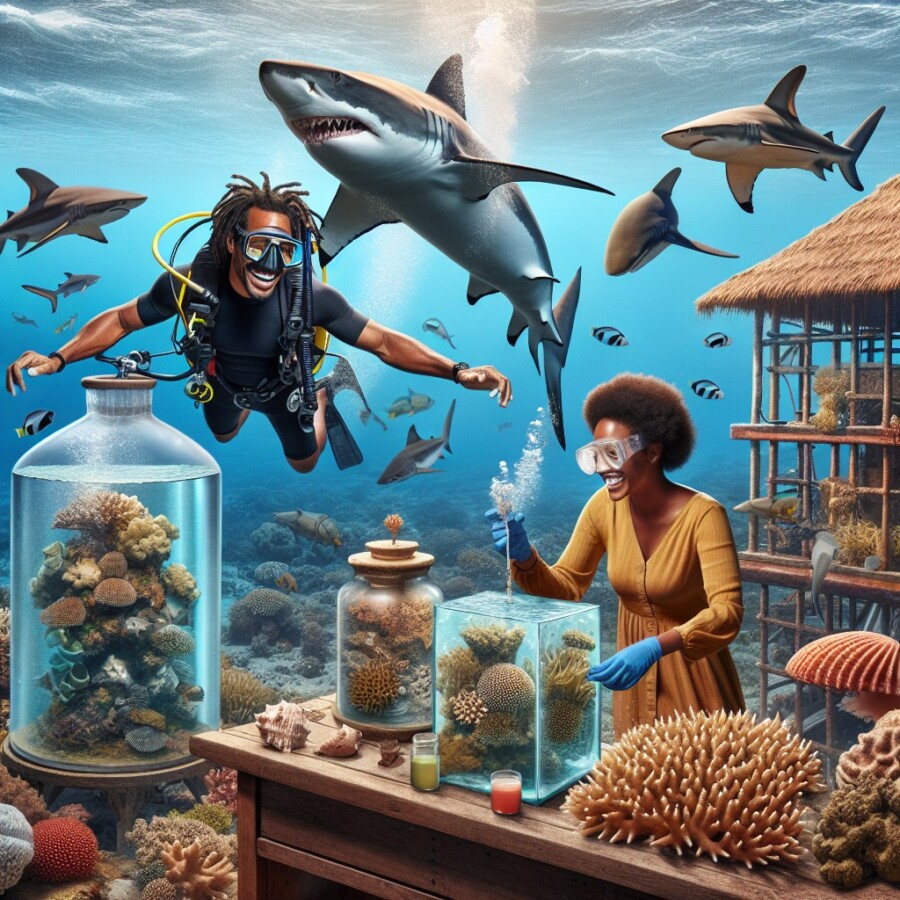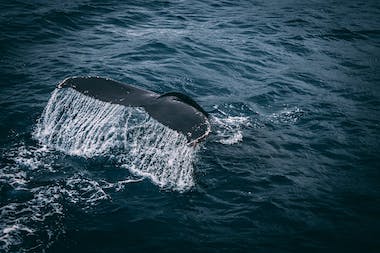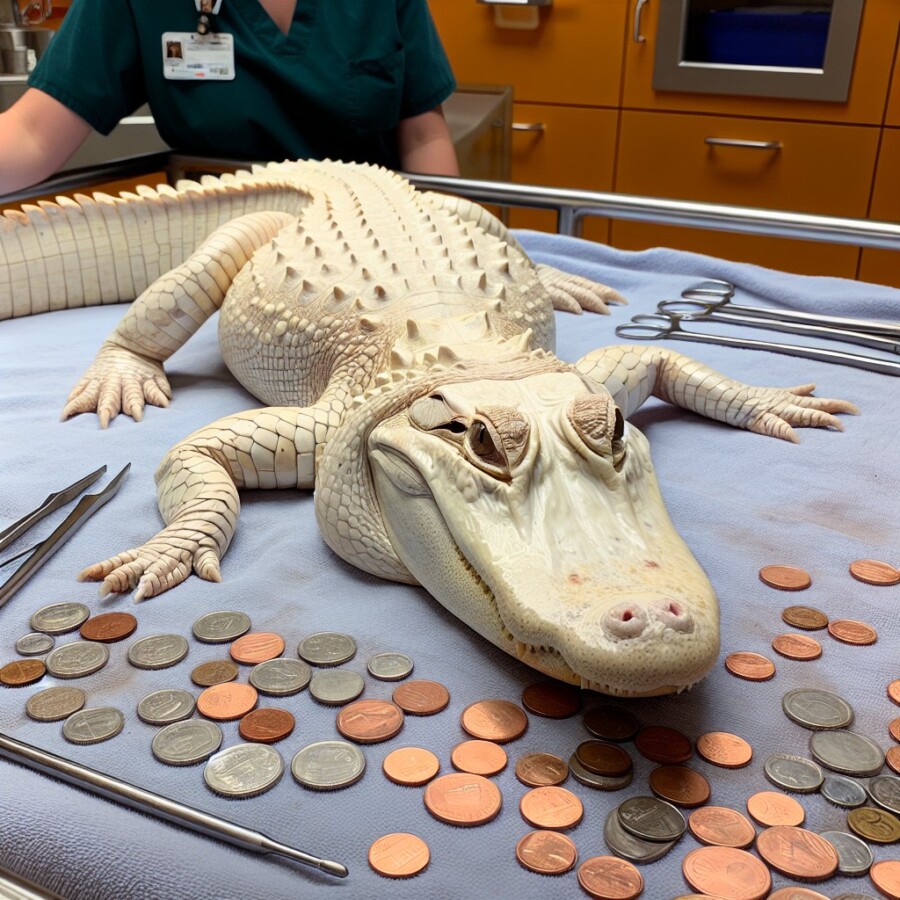Diving instructor Reginald Beckford, who used to fear sharks, now plays a crucial role in protecting the third-largest barrier reef in the world from a deadly coral disease. The Turks and Caicos Islands, where Reginald is based, became one of the many Caribbean countries affected by stony coral tissue loss disease (SCTLD) in 2019. This disease has spread rapidly and is now present in 28 nations in the region. Reginald, along with other volunteers from the TC Reef Fund, is working to stop the spread of SCTLD by applying an antibiotic paste to infected corals. While this method does not prevent reinfection, it gives the corals enough time to reproduce before they die.
Former teacher Arenthia Baker also joined the fight against SCTLD after moving to the islands from Florida. She now volunteers with the Reef Fund as a certified fish data scientist and divemaster. Despite the challenges faced by the reef, including coral bleaching caused by warm seas, Arenthia remains optimistic about their ability to combat SCTLD. Researchers at the Smithsonian’s National Museum of Natural History have made a significant breakthrough by discovering the first effective bacterial probiotic for treating the disease. This is promising news as the current use of antibiotics risks promoting antibiotic-resistant bacteria.
Turks and Caicos is at the forefront of reef restoration research. They have established two in-water coral nurseries and a land-based biobank, which is the first of its kind in the Caribbean’s British territories. The biobank, funded by the John Ellerman Foundation, houses healthy coral fragments that will eventually be replanted onto the reef. Preserving genetic diversity is crucial, and the Reef Fund’s executive director, Alizee Zimmermann, ensures the best conditions for the corals to thrive. Local carpenters have crafted tanks to hold samples of the most susceptible coral species, acting as a “coral ark.” The team also creates synthetic seawater with the ideal balance of minerals to support the corals’ growth.
Alizee Zimmermann has developed a personal connection with the corals and can tell if they are happy or hungry. The corals receive food from algae living in their tissues, and the team also feeds them conch slop and algae smoothies. Despite the challenges faced by the reef, the efforts of volunteers like Reginald and Arenthia, along with the breakthroughs in research, provide hope for the future of the coral reef ecosystem.
Original news source: Coral reef: How divers are using antibiotics to save sick corals (BBC)
🎧 Listen:
Slow
Normal
Fast
📖 Vocabulary:
| 1 | crucial | Extremely important or necessary |
| 2 | deadly | Capable of causing death |
| 3 | antibiotic | A substance used to kill or inhibit the growth of bacteria |
| 4 | reinfection | The act of becoming infected again after recovery |
| 5 | reproduce | To produce offspring or new individuals |
| 6 | optimistic | Hopeful and confident about the future |
| 7 | breakthrough | A significant development or discovery that advances knowledge or technology |
| 8 | resistant | Able to withstand the effects of a particular drug or medication |
| 9 | restoration | The process of repairing and revitalizing something that has been damaged |
| 10 | genetic | Relating to the origin and hereditary characteristics of an organism |
| 11 | synthetic | Artificially made to imitate a natural product |
| 12 | susceptible | Easily affected or likely to suffer from a particular problem |
| 13 | ecosystem | A community of interacting organisms and their physical environment |
| 14 | algae | Simple photosynthetic organisms, often found in water |
| 15 | thrive | To grow or develop successfully |
Group or Classroom Activities
Warm-up Activities:
– News Summary
Instructions: Divide the class into small groups. Each group will read the article and then work together to write a concise summary of the main points. Afterward, each group will present their summary to the class.
– Opinion Poll
Instructions: Ask the students to form pairs or small groups. Provide them with a list of questions related to the article, such as “Do you think the efforts of volunteers can successfully combat coral diseases?” or “Should more funding be allocated to reef restoration research?” Each group will discuss the questions and then present their opinions to the class.
– Vocabulary Pictionary
Instructions: Write a list of vocabulary words from the article on the board. Divide the class into two teams. One student from each team will come to the board and draw a picture to represent one of the words. The rest of their team must guess the word based on the drawing. The team that guesses the most words correctly wins.
– Pros and Cons
Instructions: Divide the class into two groups. Assign one group to discuss the pros of the coral reef restoration efforts mentioned in the article, and the other group to discuss the cons. Each group will have time to brainstorm and then present their arguments to the class. Encourage a respectful debate and discussion.
– Future Predictions
Instructions: In pairs or small groups, ask the students to imagine what the future holds for coral reefs and reef restoration efforts. They should consider factors such as climate change, human impact, and advancements in research and technology. Each group will present their predictions to the class and explain their reasoning.
🤔 Comprehension Questions:
1. What is the main role of diving instructor Reginald Beckford in protecting the barrier reef?
2. What is stony coral tissue loss disease (SCTLD) and how has it spread throughout the Caribbean?
3. How does Reginald and the TC Reef Fund work to stop the spread of SCTLD?
4. How did former teacher Arenthia Baker become involved in the fight against SCTLD?
5. What challenges does the reef face, and why does Arenthia remain optimistic about combating SCTLD?
6. What significant breakthrough have researchers at the Smithsonian’s National Museum of Natural History made in treating SCTLD?
7. What initiatives has Turks and Caicos taken in reef restoration research?
8. How does Alizee Zimmermann, the Reef Fund’s executive director, ensure the best conditions for the corals to thrive?
Go to answers ⇩
🎧✍️ Listen and Fill in the Gaps:
Diving instructor (1)______ Beckford, who used to fear sharks, now plays a crucial role in protecting the third-largest (2)______ reef in the (3)______ from a deadly coral disease. The Turks and Caicos Islands, where Reginald is (4)______, became one of the many Caribbean countries affected by stony coral tissue loss disease (SCTLD) in 2019. This disease has spread rapidly and is now present in 28 nations in the region. Reginald, along with other volunteers from the TC Reef Fund, is working to stop the spread of SCTLD by applying an antibiotic paste to infected corals. While this method does not prevent reinfection, it gives the (5)______ enough time to reproduce before they die.
Former teacher (6)______ Baker also joined the fight against SCTLD after moving to the islands from Florida. She now volunteers with the Reef Fund as a certified fish data (7)______ and divemaster. Despite the challenges faced by the reef, including coral bleaching caused by warm seas, Arenthia remains optimistic about their ability to combat SCTLD. (8)______ at the Smithsonian’s National Museum of Natural History have made a significant breakthrough by discovering the first effective bacterial probiotic for treating the disease. This is promising news as the current use of antibiotics risks promoting antibiotic-resistant bacteria.
Turks and Caicos is at the forefront of reef restoration (9)______. They have established two in-water coral nurseries and a land-based biobank, which is the first of its kind in the Caribbean’s British territories. The biobank, funded by the John Ellerman Foundation, houses healthy coral fragments that will eventually be replanted onto the reef. Preserving (10)______ diversity is crucial, and the Reef Fund’s (11)______ director, Alizee Zimmermann, ensures the best conditions for the corals to (12)______. Local carpenters have crafted tanks to hold samples of the most susceptible (13)______ species, acting as a “coral ark.” The team also creates synthetic seawater with the ideal balance of minerals to (14)______ the corals’ growth.
Alizee Zimmermann has (15)______ a personal connection with the corals and can tell if they are happy or hungry. The corals receive food from algae living in their tissues, and the team also feeds them conch slop and algae (16)______. Despite the challenges faced by the reef, the efforts of volunteers like Reginald and Arenthia, along with the breakthroughs in research, provide hope for the future of the coral reef ecosystem.
Go to answers ⇩
💬 Discussion Questions:
Students can ask a partner these questions, or discuss them as a group.
1. What is the role of diving instructor Reginald Beckford in protecting the coral reef from SCTLD?
2. How would you feel if you had to apply an antibiotic paste to infected corals to stop the spread of a deadly disease?
3. Do you think it is important to volunteer and contribute to environmental conservation efforts? Why or why not?
4. What do you think about the use of antibiotics to treat coral diseases? Do you think there are any potential risks or drawbacks?
5. How do you think coral bleaching caused by warm seas affects the overall health of the reef?
6. Have you ever volunteered for a conservation project? If so, what was your experience like?
7. What do you think about the establishment of coral nurseries and a land-based biobank for reef restoration? Do you think these initiatives are effective?
8. How important do you think genetic diversity is in preserving coral reefs? Why or why not?
9. Do you think it is possible to determine if corals are “happy” or “hungry”? Why or why not?
10. How do you think the efforts of volunteers like Reginald and Arenthia contribute to the future of coral reef ecosystems?
11. Have you ever witnessed the effects of coral bleaching or other coral diseases? How did it make you feel?
12. What do you think about the idea of creating synthetic seawater to support the growth of corals? Do you think it is a viable solution?
13. How do you think the breakthrough in discovering an effective bacterial probiotic for treating SCTLD will impact future coral reef conservation efforts?
14. Do you think it is important for individuals to develop a personal connection with the environment they are trying to protect? Why or why not?
15. How do you think the coral reef ecosystem affects the overall health of our planet?
Individual Activities
📖💭 Vocabulary Meanings:
Match each word to its meaning.
Words:
1. crucial
2. deadly
3. antibiotic
4. reinfection
5. reproduce
6. optimistic
7. breakthrough
8. resistant
9. restoration
10. genetic
11. synthetic
12. susceptible
13. ecosystem
14. algae
15. thrive
Meanings:
(A) Hopeful and confident about the future
(B) A substance used to kill or inhibit the growth of bacteria
(C) To grow or develop successfully
(D) The act of becoming infected again after recovery
(E) Simple photosynthetic organisms, often found in water
(F) Easily affected or likely to suffer from a particular problem
(G) To produce offspring or new individuals
(H) A community of interacting organisms and their physical environment
(I) The process of repairing and revitalizing something that has been damaged
(J) Extremely important or necessary
(K) A significant development or discovery that advances knowledge or technology
(L) Relating to the origin and hereditary characteristics of an organism
(M) Capable of causing death
(N) Able to withstand the effects of a particular drug or medication
(O) Artificially made to imitate a natural product
Go to answers ⇩
🔡 Multiple Choice Questions:
1. What is the third-largest barrier reef in the world?
(a) The reef in Turks and Caicos Islands
(b) The reef in Florida
(c) The reef in the Caribbean
(d) The reef in the British territories
2. What disease is affecting the coral reef in Turks and Caicos Islands?
(a) Coral bleaching
(b) Stony coral tissue loss disease (SCTLD)
(c) Antibiotic-resistant bacteria
(d) Coral reproduction
3. How are volunteers working to stop the spread of SCTLD?
(a) Removing infected corals from the reef
(b) Applying an antibiotic paste to infected corals
(c) Using synthetic seawater to treat infected corals
(d) Promoting antibiotic-resistant bacteria
4. What breakthrough has been made by researchers at the Smithsonian’s National Museum of Natural History?
(a) They discovered the first effective bacterial probiotic for treating SCTLD
(b) They discovered a new species of coral resistant to SCTLD
(c) They developed a vaccine to prevent SCTLD
(d) They found a way to eliminate SCTLD from the reef completely
5. What is the purpose of the land-based biobank in Turks and Caicos Islands?
(a) To study the effects of SCTLD on coral reproduction
(b) To provide a home for endangered fish species
(c) To conduct research on coral bleaching
(d) To house healthy coral fragments for replanting onto the reef
6. What is the role of the Reef Fund’s executive director, Alizee Zimmermann?
(a) To train volunteers in coral restoration techniques
(b) To monitor the spread of SCTLD in the Caribbean
(c) To ensure the best conditions for the corals to thrive
(d) To develop new methods for treating coral diseases
7. How do the corals receive food?
(a) From the antibiotic paste applied by volunteers
(b) From conch slop and algae smoothies
(c) From the synthetic seawater created by the team
(d) From algae living in their tissues
8. What provides hope for the future of the coral reef ecosystem?
(a) The elimination of SCTLD from the reef
(b) The development of a vaccine for coral diseases
(c) The efforts of volunteers and breakthroughs in research
(d) The relocation of the corals to a different reef system
Go to answers ⇩
🕵️ True or False Questions:
1. Turks and Caicos has established two coral nurseries and a land-based biobank for reef restoration research.
2. Arenthia Baker, a former teacher, is now a certified fish data scientist and divemaster not volunteering with the Reef Fund.
3. Diving instructor Reginald Beckford is not involved in protecting a barrier reef from a deadly coral disease.
4. Reginald and other volunteers from the TC Reef Fund are not applying an antibiotic paste to infected corals to stop the spread of SCTLD.
5. The Smithsonian’s National Museum of Natural History has discovered the first effective bacterial probiotic for treating SCTLD.
6. The Turks and Caicos Islands have been affected by stony coral tissue loss disease (SCTLD).
7. The Reef Fund’s executive director, Alizee Zimmermann, does not ensure the best conditions for the corals to thrive and has no personal connection with them.
8. The disease has spread to 28 nations in the Caribbean region.
Go to answers ⇩
📝 Write a Summary:
Write a summary of this news article in two sentences.
Check your writing now with the best free AI for English writing!
Writing Questions:
Answer the following questions. Write as much as you can for each answer.
Check your answers with our free English writing assistant!
1. What is the role of Reginald Beckford in protecting the coral reef from stony coral tissue loss disease?
2. How many nations in the Caribbean region are currently affected by stony coral tissue loss disease?
3. What is the potential risk of using antibiotics to treat the disease?
4. What initiatives has Turks and Caicos taken to restore the coral reef?
5. How does Alizee Zimmermann ensure the best conditions for the corals to thrive?
✅ Answers
🤔✅ Comprehension Question Answers:
1. The main role of diving instructor Reginald Beckford is to apply an antibiotic paste to infected corals in order to stop the spread of stony coral tissue loss disease (SCTLD) and protect the barrier reef.
2. Stony coral tissue loss disease (SCTLD) is a deadly coral disease that has spread rapidly throughout the Caribbean. It is now present in 28 nations in the region.
3. Reginald and the TC Reef Fund work to stop the spread of SCTLD by applying an antibiotic paste to infected corals. While this method does not prevent reinfection, it gives the corals enough time to reproduce before they die.
4. Former teacher Arenthia Baker became involved in the fight against SCTLD after moving to the islands from Florida. She now volunteers with the Reef Fund as a certified fish data scientist and divemaster.
5. The reef faces challenges such as coral bleaching caused by warm seas. However, Arenthia remains optimistic about combating SCTLD because researchers at the Smithsonian’s National Museum of Natural History have discovered the first effective bacterial probiotic for treating the disease.
6. Researchers at the Smithsonian’s National Museum of Natural History have made a significant breakthrough by discovering the first effective bacterial probiotic for treating stony coral tissue loss disease (SCTLD).
7. Turks and Caicos has taken initiatives in reef restoration research by establishing two in-water coral nurseries and a land-based biobank, which is the first of its kind in the Caribbean’s British territories.
8. Alizee Zimmermann, the Reef Fund’s executive director, ensures the best conditions for the corals to thrive by preserving genetic diversity, housing healthy coral fragments in the biobank, and creating synthetic seawater with the ideal balance of minerals to support the corals’ growth.
Go back to questions ⇧
🎧✍️✅ Listen and Fill in the Gaps Answers:
(1) Reginald
(2) barrier
(3) world
(4) based
(5) corals
(6) Arenthia
(7) scientist
(8) Researchers
(9) research
(10) genetic
(11) executive
(12) thrive
(13) coral
(14) support
(15) developed
(16) smoothies
Go back to questions ⇧
📖💭✅ Vocabulary Meanings Answers:
1. crucial
Answer: (J) Extremely important or necessary
2. deadly
Answer: (M) Capable of causing death
3. antibiotic
Answer: (B) A substance used to kill or inhibit the growth of bacteria
4. reinfection
Answer: (D) The act of becoming infected again after recovery
5. reproduce
Answer: (G) To produce offspring or new individuals
6. optimistic
Answer: (A) Hopeful and confident about the future
7. breakthrough
Answer: (K) A significant development or discovery that advances knowledge or technology
8. resistant
Answer: (N) Able to withstand the effects of a particular drug or medication
9. restoration
Answer: (I) The process of repairing and revitalizing something that has been damaged
10. genetic
Answer: (L) Relating to the origin and hereditary characteristics of an organism
11. synthetic
Answer: (O) Artificially made to imitate a natural product
12. susceptible
Answer: (F) Easily affected or likely to suffer from a particular problem
13. ecosystem
Answer: (H) A community of interacting organisms and their physical environment
14. algae
Answer: (E) Simple photosynthetic organisms, often found in water
15. thrive
Answer: (C) To grow or develop successfully
Go back to questions ⇧
🔡✅ Multiple Choice Answers:
1. What is the third-largest barrier reef in the world?
Answer: (a) The reef in Turks and Caicos Islands
2. What disease is affecting the coral reef in Turks and Caicos Islands?
Answer: (b) Stony coral tissue loss disease (SCTLD)
3. How are volunteers working to stop the spread of SCTLD?
Answer: (b) Applying an antibiotic paste to infected corals
4. What breakthrough has been made by researchers at the Smithsonian’s National Museum of Natural History?
Answer: (a) They discovered the first effective bacterial probiotic for treating SCTLD
5. What is the purpose of the land-based biobank in Turks and Caicos Islands?
Answer: (d) To house healthy coral fragments for replanting onto the reef
6. What is the role of the Reef Fund’s executive director, Alizee Zimmermann?
Answer: (c) To ensure the best conditions for the corals to thrive
7. How do the corals receive food?
Answer: (d) From algae living in their tissues
8. What provides hope for the future of the coral reef ecosystem?
Answer: (c) The efforts of volunteers and breakthroughs in research
Go back to questions ⇧
🕵️✅ True or False Answers:
1. Turks and Caicos has established two coral nurseries and a land-based biobank for reef restoration research. (Answer: True)
2. Arenthia Baker, a former teacher, is now a certified fish data scientist and divemaster not volunteering with the Reef Fund. (Answer: False)
3. Diving instructor Reginald Beckford is not involved in protecting a barrier reef from a deadly coral disease. (Answer: False)
4. Reginald and other volunteers from the TC Reef Fund are not applying an antibiotic paste to infected corals to stop the spread of SCTLD. (Answer: False)
5. The Smithsonian’s National Museum of Natural History has discovered the first effective bacterial probiotic for treating SCTLD. (Answer: True)
6. The Turks and Caicos Islands have been affected by stony coral tissue loss disease (SCTLD). (Answer: True)
7. The Reef Fund’s executive director, Alizee Zimmermann, does not ensure the best conditions for the corals to thrive and has no personal connection with them. (Answer: False)
8. The disease has spread to 28 nations in the Caribbean region. (Answer: True)
Go back to questions ⇧













